Černecká Ľudmila
Evolutionary and Behavioural Ecology RG
Researcher
Mgr. Ľudmila Černecká, PhD.
Slovak Academy of Sciences
Institute of Forest Ecology
Evolutionary & Behavioural Ecology Research Group
Ľudovíta Štúra 1774/2
960 01 Zvolen
Phone: +421 917 056 332
Email: komata1@gmail.com
Research interests:
My research is focused on ecology of ground-dwelling spiders mostly in beech forests and also on bark-dwellig spiders and their responces to different forest environmental factors.
Education:
- PhD. in Ecology and Biodiversity Conservation, Institute of Forest Ecology, SAS (under the supervision of RNDr. Ivan Mihál, CSc.; since 2011)
- Mgr. (MSc.) in Environmental Education, Faculty of Natural Sciences, Matej Bel University in Banská Bystrica (2001-2005)
Projects:
- VEGA 2/0012/17 – Importance of local habitats and microhabitats for spacial distribution of forest and arboricolous arthrophods
- VEGA 2/0097/16 – Ecology and a reproductive strategies of relative and syntopic animal species
- VEGA 2/0039/14 – The dynamics of health satus of mycoflora and selected dendrometrical and ecophysiological characteristics of beech ecosystems
- VEGA 2/0035/13 – Responses of animals to changing forest structure
- VEGA 2/0157/11 – Fragmentation and formation of new habitats after forest disturbances
Internships:
- 09/2013-12/2013 – as member in research group focused on biological control of spiders on pests,
Department of Botany a Zoology, Masaryk University, Brno, Czech republic
List of my publications:
2023 |
|
Gajdoš, Peter; Černecká, Ľudmila; Purgat, Pavol; Šestáková, Anna Pannonic salt marshes – important habitats for ground-active spider communities Journal Article Arachnologische Mitteilungen: Arachnology Letters, 66 (1), 2023, ISSN: 1018-4171. @article{Gajdo__2023, title = {Pannonic salt marshes – important habitats for ground-active spider communities}, author = {Peter Gajdoš and Ľudmila Černecká and Pavol Purgat and Anna Šestáková}, url = {http://dx.doi.org/10.30963/aramit6604}, doi = {10.30963/aramit6604}, issn = {1018-4171}, year = {2023}, date = {2023-12-01}, journal = {Arachnologische Mitteilungen: Arachnology Letters}, volume = {66}, number = {1}, publisher = {Arachnologische Mitteilungen}, keywords = {}, pubstate = {published}, tppubtype = {article} } | |
ČERNECKÁ, Ľudmila; PEKÁR, Stano Effect of the nutritional quality of primary food on the development, sex ratio, and size of a parasitoid in a quadri-trophic food web Journal Article European Journal of Entomology, 120 , pp. 304–309, 2023, ISSN: 1802-8829. @article{_ERNECK__2023, title = {Effect of the nutritional quality of primary food on the development, sex ratio, and size of a parasitoid in a quadri-trophic food web}, author = {Ľudmila ČERNECKÁ and Stano PEKÁR}, url = {http://dx.doi.org/10.14411/EJE.2023.031}, doi = {10.14411/eje.2023.031}, issn = {1802-8829}, year = {2023}, date = {2023-01-01}, journal = {European Journal of Entomology}, volume = {120}, pages = {304–309}, publisher = {Biology Centre, AS CR}, keywords = {}, pubstate = {published}, tppubtype = {article} } | |
2022 |
|
Korenko, Stanislav; Černecká, Ľudmila; Dorková, Martina; Sýkora, Jakub; Gajdoš, Peter Sinarachna nigricornis and genus-specific host utilization of Araneus spiders by the genus Sinarachna (Hymenoptera: Ichneumonidae) Journal Article The Journal of Arachnology, 50 (1), 2022, ISSN: 0161-8202. @article{Korenko_2022b, title = {Sinarachna nigricornis and genus-specific host utilization of Araneus spiders by the genus Sinarachna (Hymenoptera: Ichneumonidae)}, author = {Stanislav Korenko and Ľudmila Černecká and Martina Dorková and Jakub Sýkora and Peter Gajdoš}, url = {http://dx.doi.org/10.1636/JoA-S-21-012}, doi = {10.1636/joa-s-21-012}, issn = {0161-8202}, year = {2022}, date = {2022-03-01}, journal = {The Journal of Arachnology}, volume = {50}, number = {1}, publisher = {American Arachnological Society}, keywords = {}, pubstate = {published}, tppubtype = {article} } | |
Šestáková, Anna; Černecká, Ľudmila; Naumova, Maria; Purgat, Pavol; Szita, Éva; Gajdoš, Peter A review of two very rare ground spiders from sandy habitats, new for Slovakia (Araneae: Gnaphosidae) Journal Article Arachnologische Mitteilungen: Arachnology Letters, 64 (1), 2022, ISSN: 1018-4171. @article{_est_kov__2022, title = {A review of two very rare ground spiders from sandy habitats, new for Slovakia (Araneae: Gnaphosidae)}, author = {Anna Šestáková and Ľudmila Černecká and Maria Naumova and Pavol Purgat and Éva Szita and Peter Gajdoš}, url = {http://dx.doi.org/10.30963/aramit6402}, doi = {10.30963/aramit6402}, issn = {1018-4171}, year = {2022}, date = {2022-01-01}, journal = {Arachnologische Mitteilungen: Arachnology Letters}, volume = {64}, number = {1}, publisher = {Arachnologische Mitteilungen}, keywords = {}, pubstate = {published}, tppubtype = {article} } | |
Korenko, Stanislav; Sýkora, Jakub; Černecká, Ľudmila; Gajdoš, Peter; Purgat, Pavol; Černecký, Ján; Holý, Kamil; Heneberg, Petr; Agnarsson, Ingi Journal of Hymenoptera Research, 93 , pp. 89–100, 2022, ISSN: 1070-9428. @article{Korenko_2022, title = {Elevation gradient affects the distribution and host utilisation of Zatypota anomala (Hymenoptera, Ichneumonidae) associated with mesh web weaving spiders (Araneae, Dictynidae)}, author = {Stanislav Korenko and Jakub Sýkora and Ľudmila Černecká and Peter Gajdoš and Pavol Purgat and Ján Černecký and Kamil Holý and Petr Heneberg and Ingi Agnarsson}, url = {http://dx.doi.org/10.3897/jhr.93.91513}, doi = {10.3897/jhr.93.91513}, issn = {1070-9428}, year = {2022}, date = {2022-01-01}, journal = {Journal of Hymenoptera Research}, volume = {93}, pages = {89–100}, publisher = {Pensoft Publishers}, keywords = {}, pubstate = {published}, tppubtype = {article} } | |
2021 |
|
Pekár, Stano; Wolff, Jonas O; Černecká, Ľudmila; Birkhofer, Klaus; Mammola, Stefano; Lowe, Elizabeth C; Fukushima, Caroline S; Herberstein, Marie E; Kučera, Adam; Buzatto, Bruno A; Djoudi, El Aziz; Domenech, Marc; Enciso, Alison Vanesa; Espejo, Yolanda Piñanez M G; Febles, Sara; García, Luis F; Gonçalves-Souza, Thiago; Isaia, Marco; Lafage, Denis; Líznarová, Eva; Macías-Hernández, Nuria; Magalhães, Ivan; Malumbres-Olarte, Jagoba; Michálek, Ondřej; Michalik, Peter; Michalko, Radek; Milano, Filippo; Munévar, Ana; Nentwig, Wolfgang; Nicolosi, Giuseppe; Painting, Christina J; Pétillon, Julien; Piano, Elena; Privet, Kaïna; Ramírez, Martín J; Ramos, Cândida; Řezáč, Milan; Ridel, Aurélien; Růžička, Vlastimil; Santos, Irene; Sentenská, Lenka; Walker, Leilani; Wierucka, Kaja; Zurita, Gustavo Andres; Cardoso, Pedro The World Spider Trait database: a centralized global open repository for curated data on spider traits Journal Article Database, 2021 , 2021, ISSN: 1758-0463. @article{Pek_r_2021, title = {The World Spider Trait database: a centralized global open repository for curated data on spider traits}, author = {Stano Pekár and Jonas O Wolff and Ľudmila Černecká and Klaus Birkhofer and Stefano Mammola and Elizabeth C Lowe and Caroline S Fukushima and Marie E Herberstein and Adam Kučera and Bruno A Buzatto and El Aziz Djoudi and Marc Domenech and Alison Vanesa Enciso and Yolanda M G Piñanez Espejo and Sara Febles and Luis F García and Thiago Gonçalves-Souza and Marco Isaia and Denis Lafage and Eva Líznarová and Nuria Macías-Hernández and Ivan Magalhães and Jagoba Malumbres-Olarte and Ondřej Michálek and Peter Michalik and Radek Michalko and Filippo Milano and Ana Munévar and Wolfgang Nentwig and Giuseppe Nicolosi and Christina J Painting and Julien Pétillon and Elena Piano and Kaïna Privet and Martín J Ramírez and Cândida Ramos and Milan Řezáč and Aurélien Ridel and Vlastimil Růžička and Irene Santos and Lenka Sentenská and Leilani Walker and Kaja Wierucka and Gustavo Andres Zurita and Pedro Cardoso}, url = {http://dx.doi.org/10.1093/database/baab064}, doi = {10.1093/database/baab064}, issn = {1758-0463}, year = {2021}, date = {2021-10-01}, journal = {Database}, volume = {2021}, publisher = {Oxford University Press (OUP)}, keywords = {}, pubstate = {published}, tppubtype = {article} } | |
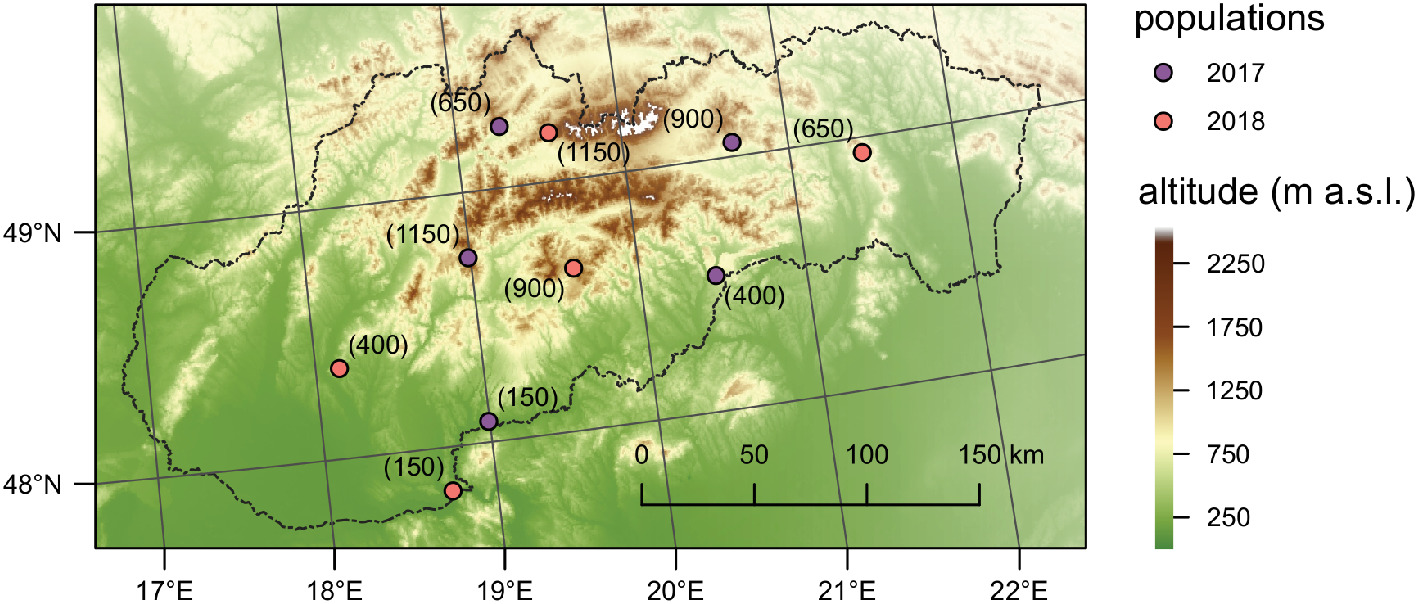 | Černecká, Ľudmila; Dorková, Martina; Jarčuška, Benjamín; Peter Kaňuch, Elevational variation in voltinism demonstrates climatic adaptation in the dark bush-cricket Journal Article Ecological entomology, 46 (2), pp. 360-367, 2021, ISBN: 0307-6946. @article{Černecká2021, title = {Elevational variation in voltinism demonstrates climatic adaptation in the dark bush-cricket}, author = {Ľudmila Černecká and Martina Dorková and Benjamín Jarčuška and Peter Kaňuch,}, doi = {https://doi.org/10.1111/een.12972}, isbn = {0307-6946}, year = {2021}, date = {2021-01-01}, journal = {Ecological entomology}, volume = {46}, number = {2}, pages = {360-367}, abstract = {1. Phenotypic plasticity and/or genetic adaptation may allow species to live in a variable environment. It has been shown that eggs of the dark bush-cricket, Pholidoptera griseoaptera, which experienced an insufficient warm treatment (shorter and/or colder), had a longer development time and hatched predominantly after the second diapause. 2. Given the broad distribution of this species from sea level to the timber line, we expected variation in voltinism along a climatic gradient. To reveal the role of natural selection in egg-hatching patterns, we compared different and unrelated populations sampled along a 1000 m elevational gradient in a common laboratory experiment. 3. In the same rearing microclimate, we found that populations from mountains had mostly a shorter life cycle, whereas semivoltinism prevailed in lowland populations. 4. This demonstrated the genetically underpinned local adaptation of this insect to harsh mountain environments with a shorter growing season determined by elevation.}, keywords = {}, pubstate = {published}, tppubtype = {article} } 1. Phenotypic plasticity and/or genetic adaptation may allow species to live in a variable environment. It has been shown that eggs of the dark bush-cricket, Pholidoptera griseoaptera, which experienced an insufficient warm treatment (shorter and/or colder), had a longer development time and hatched predominantly after the second diapause. 2. Given the broad distribution of this species from sea level to the timber line, we expected variation in voltinism along a climatic gradient. To reveal the role of natural selection in egg-hatching patterns, we compared different and unrelated populations sampled along a 1000 m elevational gradient in a common laboratory experiment. 3. In the same rearing microclimate, we found that populations from mountains had mostly a shorter life cycle, whereas semivoltinism prevailed in lowland populations. 4. This demonstrated the genetically underpinned local adaptation of this insect to harsh mountain environments with a shorter growing season determined by elevation. |
2020 |
|
 | Gajdoš, Peter; Szinetár, Csaba; Román, Krisztína; Šestáková, Anna; Purgat, Pavol; Černecká, Ľudmila Clubiona pseudoneglecta and Paratrachelas maculatus, two spider species new to the Slovak fauna (Araneae: Clubionidae, Trachelidae) Journal Article Arachnologische Mitteilungen, 60 (1), pp. 44-49, 2020, ISSN: 1018-4171. @article{Gajdoš2020, title = {\textit{Clubiona pseudoneglecta} and \textit{Paratrachelas maculatus}, two spider species new to the Slovak fauna (Araneae: Clubionidae, Trachelidae)}, author = {Peter Gajdoš and Csaba Szinetár and Krisztína Román and Anna Šestáková and Pavol Purgat and Ľudmila Černecká}, doi = {10.30963/aramit6009}, issn = {1018-4171}, year = {2020}, date = {2020-09-30}, journal = {Arachnologische Mitteilungen}, volume = {60}, number = {1}, pages = {44-49}, keywords = {}, pubstate = {published}, tppubtype = {article} } |
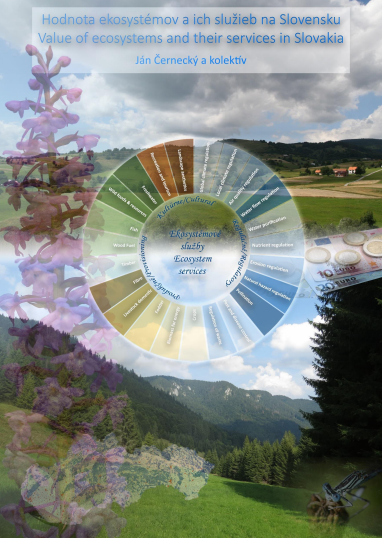 | Černecký, Ján; Gajdoš, Peter; Ďuricová, Viktória; Špulerová, Jana; Černecká, Ľudmila; Švajda, Juraj; Andráš, Peter; Ulrych, Libor; Rybanič, Rastislav; Považan, Radoslav Hodnota ekosystémov a ich služieb na Slovensku Book Štátna ochrana prírody SR, 2020, ISBN: 978-80-8184-078-4. @book{Černecký2020, title = {Hodnota ekosystémov a ich služieb na Slovensku}, author = {Ján Černecký and Peter Gajdoš and Viktória Ďuricová and Jana Špulerová and Ľudmila Černecká and Juraj Švajda and Peter Andráš and Libor Ulrych and Rastislav Rybanič and Radoslav Považan}, isbn = {978-80-8184-078-4}, year = {2020}, date = {2020-01-01}, publisher = {Štátna ochrana prírody SR}, keywords = {}, pubstate = {published}, tppubtype = {book} } |
2019 |
|
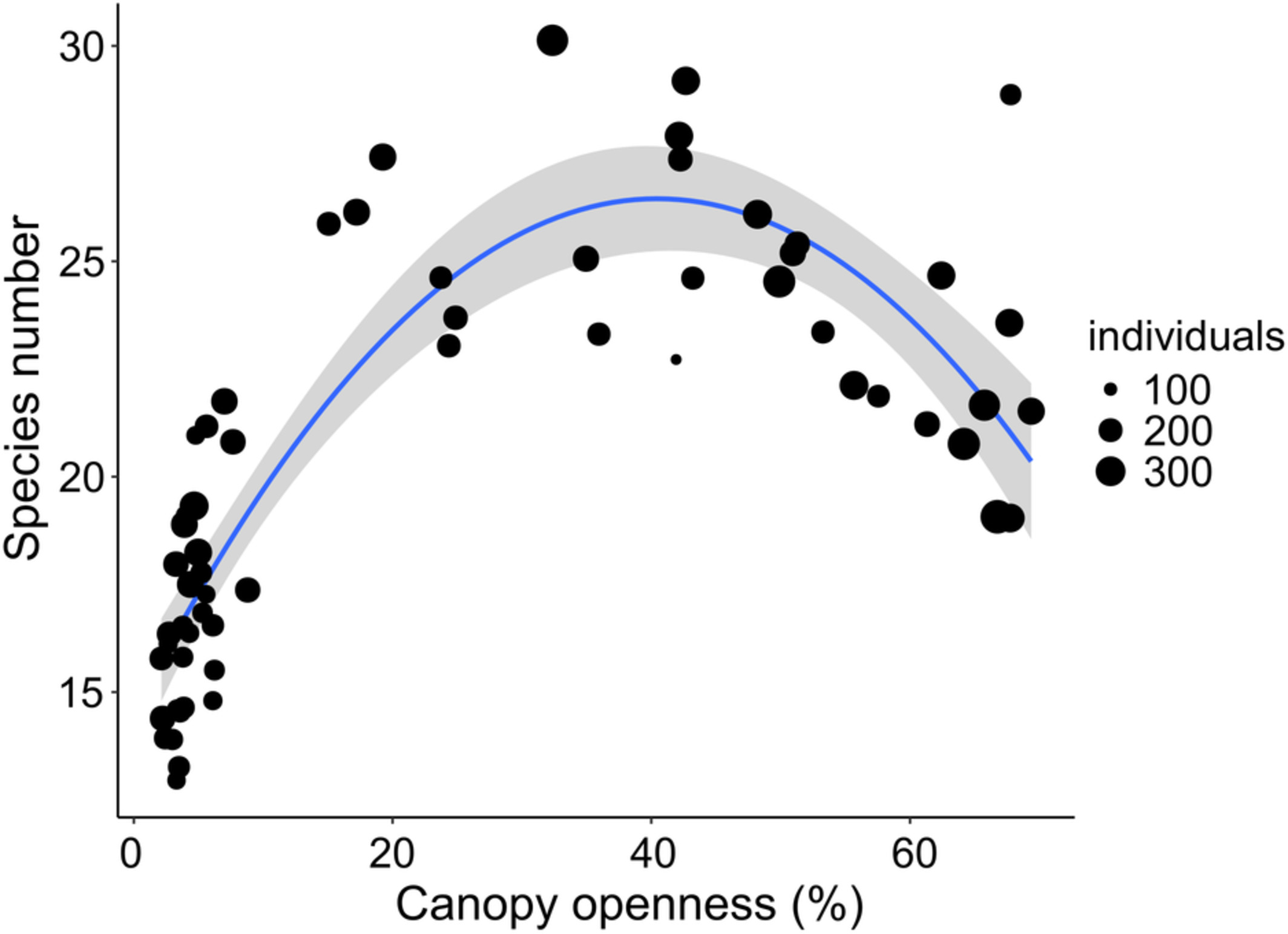 | Černecká, Ľudmila; Mihál, Ivan; Gajdoš, Peter; Jarčuška, Benjamín The effect of canopy openness of European beech (Fagus sylvatica) forests on ground‐dwelling spider communities Journal Article Insect Conservation and Diversity, 13 (3), pp. 250-261, 2019, ISSN: 1752-458X. @article{Černecká2019, title = {The effect of canopy openness of European beech (\textit{Fagus sylvatica}) forests on ground‐dwelling spider communities}, author = {Ľudmila Černecká and Ivan Mihál and Peter Gajdoš and Benjamín Jarčuška}, doi = {10.1111/icad.12380}, issn = {1752-458X}, year = {2019}, date = {2019-09-10}, journal = {Insect Conservation and Diversity}, volume = {13}, number = {3}, pages = {250-261}, keywords = {}, pubstate = {published}, tppubtype = {article} } |
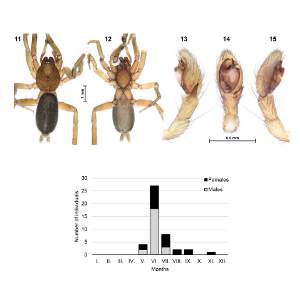 | Gajdoš, Peter; Černecká, Ľudmila; Šestáková, Anna Pannonic salt marshes revealed six new spiders to Slovakia (Araneae: Gnaphosidae, Linyphiidae, Lycosidae, Theridiidae). Journal Article Biológia, 74 (1), pp. 53-64, 2019. @article{Gajdoš2019, title = {Pannonic salt marshes revealed six new spiders to Slovakia (Araneae: Gnaphosidae, Linyphiidae, Lycosidae, Theridiidae). }, author = {Peter Gajdoš and Ľudmila Černecká and Anna Šestáková}, doi = { DOI: 10.2478/s11756-018-0145-z}, year = {2019}, date = {2019-01-01}, journal = {Biológia}, volume = {74}, number = {1}, pages = {53-64}, abstract = {Inland salt marshes and salt steppes are among the most endangered types of habitats listed in the Habitats Directive. The understanding of this fauna is poor although many rare species live here. From 2016 to 2018 we studied the spider communities of five salt marsh localities in the Slovak part of the Pannonian region belonging to Natura 2000 sites. The research revealed six very rare species: Gnaphosa rufula, Zelotes tenuis, Metopobactrus deserticola, Tallusia vindobonensis, Pardosa maisa and Theridion uhligi, all recorded for the first time in Slovakia. Their characteristic features, photos of habitus and genitalia, notes on their phenology, habitat, an overview of the presently known distribution, and the dominant species of spider assemblages are presented.}, keywords = {}, pubstate = {published}, tppubtype = {article} } Inland salt marshes and salt steppes are among the most endangered types of habitats listed in the Habitats Directive. The understanding of this fauna is poor although many rare species live here. From 2016 to 2018 we studied the spider communities of five salt marsh localities in the Slovak part of the Pannonian region belonging to Natura 2000 sites. The research revealed six very rare species: Gnaphosa rufula, Zelotes tenuis, Metopobactrus deserticola, Tallusia vindobonensis, Pardosa maisa and Theridion uhligi, all recorded for the first time in Slovakia. Their characteristic features, photos of habitus and genitalia, notes on their phenology, habitat, an overview of the presently known distribution, and the dominant species of spider assemblages are presented. |
 | Černecký, Ján; Gajdoš, Peter; Špulerová, Jana; Halada, Ľuboš; Mederly, Peter; Ulrych, Libor; Ďuricová, Viktória; Švajda, Juraj; Černecká, Ľudmila; Andráš, Peter; Rybanič, Rastislav Ecosystems in Slovakia Journal Article Journal of Maps, 16 (2), pp. 28-35, 2019. @article{Černecký2019, title = {Ecosystems in Slovakia}, author = {Ján Černecký and Peter Gajdoš and Jana Špulerová and Ľuboš Halada and Peter Mederly and Libor Ulrych and Viktória Ďuricová and Juraj Švajda and Ľudmila Černecká and Peter Andráš and Rastislav Rybanič}, doi = {10.1080/17445647.2019.1689858}, year = {2019}, date = {2019-01-01}, journal = {Journal of Maps}, volume = {16}, number = {2}, pages = {28-35}, abstract = {The authors have prepared a detailed map of Slovakia’s ecosystems, which identifies individual ecosystems and their spatial distribution, status, and selected properties. The impetus for the production of this map is the need of various stakeholders, especially nature protection bodies, forestry management, agricultural management and public administration, for better data on the distribution of ecosystems. The methodology mostly involves using GIS analytical tools to combine datasets on nature protection, forestry, and agriculture which list attributes related to habitat identification. The results can be used for ecosystem services assessment, spatial planning, nature protection analysis, and other related purposes. The spatial precision of the data is determined by that of the field data, which was mostly created at scales between 1:10000 and 1:5000. The data are stored in the form of a geodatabase containing more than 1,000,000 polygons.}, keywords = {}, pubstate = {published}, tppubtype = {article} } The authors have prepared a detailed map of Slovakia’s ecosystems, which identifies individual ecosystems and their spatial distribution, status, and selected properties. The impetus for the production of this map is the need of various stakeholders, especially nature protection bodies, forestry management, agricultural management and public administration, for better data on the distribution of ecosystems. The methodology mostly involves using GIS analytical tools to combine datasets on nature protection, forestry, and agriculture which list attributes related to habitat identification. The results can be used for ecosystem services assessment, spatial planning, nature protection analysis, and other related purposes. The spatial precision of the data is determined by that of the field data, which was mostly created at scales between 1:10000 and 1:5000. The data are stored in the form of a geodatabase containing more than 1,000,000 polygons. |
2018 |
|
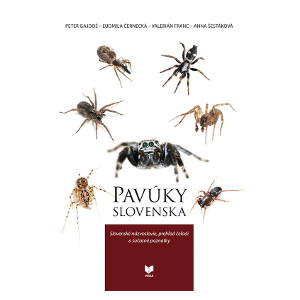 | Gajdoš, Peter; Černecká, Ľudmila; Franc, Valerián; Šestáková, Anna Spiders of Slovakia Book VEDA, 2018, ISBN: 978-80-224-1618-4. @book{Gajdoš2018, title = {Spiders of Slovakia }, author = {Peter Gajdoš and Ľudmila Černecká and Valerián Franc and Anna Šestáková }, isbn = {978-80-224-1618-4}, year = {2018}, date = {2018-02-15}, journal = {VEDA}, publisher = {VEDA}, abstract = {The monograph is focused on Slovak spider names recorded in our country, on the history of Slovak names and basic rules of zoological nomenclature. Moreover it briefly discussed spider ecology and phylogeny, and is also a guide to Slovakian spider families. In the history of the Slovak language was largely suppressed, therefore the formation of the Slovak spider nomenclature was more or less confined to a few common and remarkable species (e. g. Araneus diadematus, Tegenaria domestica). First Slovak spider names appeared in the second half of the 19th century in natural history schoolbooks. Improvements of the Slovak nomenclature continued in 20th century by translators S. Klima, R. Klačko, A. Gutteková, I. Zmoray and others. The first important milestone in Slovak spider nomeclature was made by O. Žitnanská in the encyclopedia “Z našej prírody” (1981) presented 29 species. Next significant changes of Slovak nomenclature formed mostly in the last decade. One of the meaningful, although unpublished work, is the bachelor thesis by Korenko (2004), which listed Slovak names for 62 species and 20 spider families. However most of the names seems to be influenced by Czech nomenclature by Kůrka, Kovařík(2003). He publicized all his names and thesis on his website, which included family determination key. Thanks to this page Slovak spider names of species and their families has been available to the general public. Few years later came out the monograph about High Tatras, which listed Slovak names to 65 species (Svatoň, 2010). No other publication influenced Slovak spider nomenclature from that time. In conclusion, we found out 153species with Slovak names, represented approximately 16% of our arachnofauna. From all known Slovakian families only six lacked Slovak name. Interestingly, numerous variations of Slovak names were used dominantly for well-knownspecies e. g. Araneus diadematus, Argiope bruennichi, Teganaria domestica,Argyroneta aquatica, Dolomedes fimbriatus and Salticus sceniscus. Here we presented971 Slovak species names and 39 Slovak family names of our spiders. Additionaly to Slovak names we made an overview of scientific synonyms used in Slovak publications and known dubious names. Moreover the book offers to readers essential information and many interesting facts about spider families known from Slovakia. }, keywords = {}, pubstate = {published}, tppubtype = {book} } The monograph is focused on Slovak spider names recorded in our country, on the history of Slovak names and basic rules of zoological nomenclature. Moreover it briefly discussed spider ecology and phylogeny, and is also a guide to Slovakian spider families. In the history of the Slovak language was largely suppressed, therefore the formation of the Slovak spider nomenclature was more or less confined to a few common and remarkable species (e. g. Araneus diadematus, Tegenaria domestica). First Slovak spider names appeared in the second half of the 19th century in natural history schoolbooks. Improvements of the Slovak nomenclature continued in 20th century by translators S. Klima, R. Klačko, A. Gutteková, I. Zmoray and others. The first important milestone in Slovak spider nomeclature was made by O. Žitnanská in the encyclopedia “Z našej prírody” (1981) presented 29 species. Next significant changes of Slovak nomenclature formed mostly in the last decade. One of the meaningful, although unpublished work, is the bachelor thesis by Korenko (2004), which listed Slovak names for 62 species and 20 spider families. However most of the names seems to be influenced by Czech nomenclature by Kůrka, Kovařík(2003). He publicized all his names and thesis on his website, which included family determination key. Thanks to this page Slovak spider names of species and their families has been available to the general public. Few years later came out the monograph about High Tatras, which listed Slovak names to 65 species (Svatoň, 2010). No other publication influenced Slovak spider nomenclature from that time. In conclusion, we found out 153species with Slovak names, represented approximately 16% of our arachnofauna. From all known Slovakian families only six lacked Slovak name. Interestingly, numerous variations of Slovak names were used dominantly for well-knownspecies e. g. Araneus diadematus, Argiope bruennichi, Teganaria domestica,Argyroneta aquatica, Dolomedes fimbriatus and Salticus sceniscus. Here we presented971 Slovak species names and 39 Slovak family names of our spiders. Additionaly to Slovak names we made an overview of scientific synonyms used in Slovak publications and known dubious names. Moreover the book offers to readers essential information and many interesting facts about spider families known from Slovakia. |
2017 |
|
 | Černecká, Ľudmila; Mihál, Ivan; Jarčuška, Benjamín Response of ground-dwelling harvestman assemblages (Arachnida: Opiliones) to European beech forest canopy cover Journal Article European Journal of Entomology, (114), pp. 334-342, 2017. @article{Černecká2017b, title = {Response of ground-dwelling harvestman assemblages (Arachnida: Opiliones) to European beech forest canopy cover}, author = {Ľudmila Černecká and Ivan Mihál and Benjamín Jarčuška}, url = {https://www.eje.cz/pdfs/eje/2017/01/42.pdf}, year = {2017}, date = {2017-07-24}, journal = {European Journal of Entomology}, number = {114}, pages = {334-342}, abstract = {We studied the effects of the overstory canopy cover on ground-dwelling harvestmen communities in European beech forests in the Western Carpathian Mts. We analyzed the differences in species richness, abundance and composition in two tree canopy cover categories (closed and open canopy). Overall, 1765 individuals belonging to 16 species were caught using pitfall traps. Repeated-measures ANOVA revealed that under both closed and open canopies a similar absolute and rarefi ed species richness and number of individuals (standardized to 100 pitfall trap days) were caught, and that both species richness and abundance were affected by the season (i.e., time of trap replacement); yet the total number of individuals trapped was more than two times greater under the open canopy than under the closed canopy. Despite the subtle differences in the taxonomic composition of the catches under the open and closed canopies revealed by DCA followed by RDA, the composition of ground dwelling harvestmen assemblages differed under the two canopy covers. The open canopy was more suitable for heliophilic, xerothermic eurytopic harvestmen species typical for open and ecotonal habitats, such as Egaenus convexus (C.L. Koch) and Oligolophus tridens (C.L. Koch) but still suitable for hemihygrophilic Lophopilio palpinalis (Herbst). The closed canopy stands were preferred by shade-tolerant, hygrophilic eurytopic harvestmen species, such as Trogulus sp. Latreille, Dicranolasma scabrum (Herbst) and Platybunus bucephalus (C.L. Koch). Our results highlight the importance of intra habitat heterogeneity of a harvestmen community.}, keywords = {}, pubstate = {published}, tppubtype = {article} } We studied the effects of the overstory canopy cover on ground-dwelling harvestmen communities in European beech forests in the Western Carpathian Mts. We analyzed the differences in species richness, abundance and composition in two tree canopy cover categories (closed and open canopy). Overall, 1765 individuals belonging to 16 species were caught using pitfall traps. Repeated-measures ANOVA revealed that under both closed and open canopies a similar absolute and rarefi ed species richness and number of individuals (standardized to 100 pitfall trap days) were caught, and that both species richness and abundance were affected by the season (i.e., time of trap replacement); yet the total number of individuals trapped was more than two times greater under the open canopy than under the closed canopy. Despite the subtle differences in the taxonomic composition of the catches under the open and closed canopies revealed by DCA followed by RDA, the composition of ground dwelling harvestmen assemblages differed under the two canopy covers. The open canopy was more suitable for heliophilic, xerothermic eurytopic harvestmen species typical for open and ecotonal habitats, such as Egaenus convexus (C.L. Koch) and Oligolophus tridens (C.L. Koch) but still suitable for hemihygrophilic Lophopilio palpinalis (Herbst). The closed canopy stands were preferred by shade-tolerant, hygrophilic eurytopic harvestmen species, such as Trogulus sp. Latreille, Dicranolasma scabrum (Herbst) and Platybunus bucephalus (C.L. Koch). Our results highlight the importance of intra habitat heterogeneity of a harvestmen community. |
Takasuka, Keizo; Korenko, Stanislav; Kysilková, Kristýna; Štefánik, Martin; Černecká, Ľudmila; Mihál, Ivan; Dolejš, Petr; Holý, Kamil Zoologischer Anzeiger, (267), pp. 8-14, 2017. @article{Takasuka2017, title = {Host utilization of koinobiont spider-ectoparasitoids (Ichneumonidae,Ephialtini, Polysphincta genus-group) associated with Cyclosa spp.(Araneae, Araneidae) across the Palaearctic}, author = {Keizo Takasuka and Stanislav Korenko and Kristýna Kysilková and Martin Štefánik and Ľudmila Černecká and Ivan Mihál and Petr Dolejš and Kamil Holý }, url = {https://ac.els-cdn.com/S0044523117300013/1-s2.0-S0044523117300013-main.pdf?_tid=a81d29fb-5c6a-4715-bcd8-30c822088c65&acdnat=1549019163_c3ee88daccc8b0f2f673b9369a4990a3}, year = {2017}, date = {2017-07-11}, journal = {Zoologischer Anzeiger}, number = {267}, pages = {8-14}, abstract = {Most parasitoid wasps establish close interactions with their host taxa, and polysphinctines (ichneu-monid koinobiont spider-ectoparasitoids) are no exception. Two polysphinctines, Zatypota picticollis andReclinervellus nielseni, are, respectively, partial and exclusive parasitoids of Cyclosa spp. (Araneidae),which build an orb web with web decoration. The main aim was to investigate the host associationof these wasps, including the behavioural alteration of spider hosts across two sides of the Palaearctic(Central Europe vs. Japan).R. nielseni was associated with relatively common local species of Cyclosa both in Europe (C. conica),sharing these with Z. picticollis, and in Japan (C. argenteoalba). We also found a new alternative host spider,Cyclosa laticauda, in Japan.Host web alterations were observed in all parasitoid-spider interrelationships. The alteration patternsof the two polysphinctines have a similar constructional plan that exploits pre-existing frame linesfor the cocoon webs; however, they differ partially in their radii, which are either straight or zigzagshaped and in hub loops present or absent. This indicates that certain differences in the neurophysio-logic changes in the spider host occur depending on the parasitoids. The fluffy decoration induced in C.argenteoalba manipulated by R. nielseni was not found in C. conica or C. laticauda, probably because of itsnon-innateness.The cocoons of R. nielseni had four conspicuous long ribs making the cocoon quadrate in cross-section regardless of the host spider species or region; such ribs do not appear in two co-generic species.}, keywords = {}, pubstate = {published}, tppubtype = {article} } Most parasitoid wasps establish close interactions with their host taxa, and polysphinctines (ichneu-monid koinobiont spider-ectoparasitoids) are no exception. Two polysphinctines, Zatypota picticollis andReclinervellus nielseni, are, respectively, partial and exclusive parasitoids of Cyclosa spp. (Araneidae),which build an orb web with web decoration. The main aim was to investigate the host associationof these wasps, including the behavioural alteration of spider hosts across two sides of the Palaearctic(Central Europe vs. Japan).R. nielseni was associated with relatively common local species of Cyclosa both in Europe (C. conica),sharing these with Z. picticollis, and in Japan (C. argenteoalba). We also found a new alternative host spider,Cyclosa laticauda, in Japan.Host web alterations were observed in all parasitoid-spider interrelationships. The alteration patternsof the two polysphinctines have a similar constructional plan that exploits pre-existing frame linesfor the cocoon webs; however, they differ partially in their radii, which are either straight or zigzagshaped and in hub loops present or absent. This indicates that certain differences in the neurophysio-logic changes in the spider host occur depending on the parasitoids. The fluffy decoration induced in C.argenteoalba manipulated by R. nielseni was not found in C. conica or C. laticauda, probably because of itsnon-innateness.The cocoons of R. nielseni had four conspicuous long ribs making the cocoon quadrate in cross-section regardless of the host spider species or region; such ribs do not appear in two co-generic species. | |
Mihál, Ivan; Černecká, Ľudmila Vestnik zoologii, 51 (3), pp. 259-270, 2017. @article{Mihál2017, title = {Structure of harvestmen (Arachnida, Opiliones) communities in different, antthropically disturbed beech ecosystems (Western Carpathians, Slovakia)}, author = {Ivan Mihál and Ľudmila Černecká }, url = {https://content.sciendo.com/view/journals/vzoo/51/3/article-p259.xml}, year = {2017}, date = {2017-06-14}, journal = {Vestnik zoologii}, volume = {51}, number = {3}, pages = {259-270}, abstract = {The authors evaluate the impact of diff erent types of forestry management, and other anthropic disturbances, on harvestmen (Opiliones) communities in sub-mountain beech stands in the Western Carpathians. Harvestmen were studied in three main localities, consisting of nine partial plots (Žiar nad Hronom — (1) control closed canopy stand; Jalná — (2) control stand, (3) thinning stand, (4) 11-year old forest clearing, and (5) 2-year old forest clearing; Kováčová — (6) control stand, (7) coppice, (8) 10 year old forest clearing, and (9) 3-year old forest clearing). In total, 16 harvestmen species were found, representing 45.7 % of the 35 harvestmen species range known in Slovakia to date. Th e most abundant species, i. e., those with the highest dominance values (D), were Lophopilio palpinalis (D = 22.8%), Trogulus nepaeformis (D = 17.9%), Lacinius ephippiatus (D = 12.2%), Trogulus tricarinatus (D = 11.3%), Oligolophus tridens (D = 10.5%), and Nemastoma lugubre (D = 6.7%). At the partial plot of the 3-year old forest clearing, we found eight harvestmen species and noticed a high number of specimens (5.49) caught in one individual trap, and this was also the highest number among all the nine sites.}, keywords = {}, pubstate = {published}, tppubtype = {article} } The authors evaluate the impact of diff erent types of forestry management, and other anthropic disturbances, on harvestmen (Opiliones) communities in sub-mountain beech stands in the Western Carpathians. Harvestmen were studied in three main localities, consisting of nine partial plots (Žiar nad Hronom — (1) control closed canopy stand; Jalná — (2) control stand, (3) thinning stand, (4) 11-year old forest clearing, and (5) 2-year old forest clearing; Kováčová — (6) control stand, (7) coppice, (8) 10 year old forest clearing, and (9) 3-year old forest clearing). In total, 16 harvestmen species were found, representing 45.7 % of the 35 harvestmen species range known in Slovakia to date. Th e most abundant species, i. e., those with the highest dominance values (D), were Lophopilio palpinalis (D = 22.8%), Trogulus nepaeformis (D = 17.9%), Lacinius ephippiatus (D = 12.2%), Trogulus tricarinatus (D = 11.3%), Oligolophus tridens (D = 10.5%), and Nemastoma lugubre (D = 6.7%). At the partial plot of the 3-year old forest clearing, we found eight harvestmen species and noticed a high number of specimens (5.49) caught in one individual trap, and this was also the highest number among all the nine sites. | |
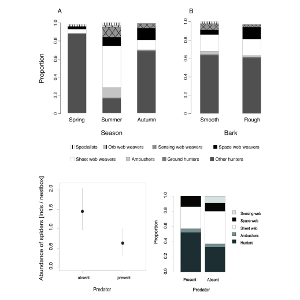 | Černecká, Ľ; Michalko, R; Krištín, A Abiotic factors and biotic interactions jointly drive spider assemblages in nest-boxes in mixed forests Journal Article Journal of Arachnology, 45 (2), pp. 213-222, 2017, ISSN: 0161-8202. @article{Černecká2017, title = {Abiotic factors and biotic interactions jointly drive spider assemblages in nest-boxes in mixed forests}, author = {Ľ. Černecká and R. Michalko and A. Krištín}, url = {http://www.bioone.org/doi/abs/10.1636/JoA-S-15-005.1}, doi = {https://doi.org/10.1636/JoA-S-15-005.1}, issn = {0161-8202}, year = {2017}, date = {2017-01-01}, journal = {Journal of Arachnology}, volume = {45}, number = {2}, pages = {213-222}, abstract = {Although spiders are common inhabitants of tree cavities, factors that drive their community structure in these microhabitats are little known. Here we investigated whether bark type, season, intraguild predation (IGP) among spiders, and presence of vertebrate predators can influence the spider community structure in tree cavities. We examined spider abundance and the taxonomic and functional composition of spiders in nest-boxes within two mixed forest stands in central Slovakia in 2012–2013. In total, 1211 spiders belonging to 31 species were sampled from 60 nest-boxes at two sites over three seasons. Spider abundance peaked in autumn as spiders sought wintering sites. Guilds and taxonomic composition changed seasonally with spring and autumn communities dominated by “Other hunters” (Anyphaenidae, Clubionidae, Philodromidae) while during summer the community was dominated by “Sheet web weavers” (Linyphiidae). The guild and taxonomic turnover may be partly explained by the interaction between spiders' phenology and IGP exerted by winter-active spiders on smaller spiders from autumn until spring. Bark type influenced the guild composition as dominance of “Space web weavers” was higher in trees with rough bark than in trees with smooth bark. The rough bark also reduced the intensity of IGP by Anyphaena accentuata (Sundevall, 1833) on philodromids. The presence of insectivorous birds reduced the abundance of spiders by 67%. The presence of bird predators altered the guild composition as they affected mostly the web spiders. The results show that the biotic interactions and abiotic factors interactively determined the spider community structure in the nest-boxes depending on spiders' functional traits.}, keywords = {}, pubstate = {published}, tppubtype = {article} } Although spiders are common inhabitants of tree cavities, factors that drive their community structure in these microhabitats are little known. Here we investigated whether bark type, season, intraguild predation (IGP) among spiders, and presence of vertebrate predators can influence the spider community structure in tree cavities. We examined spider abundance and the taxonomic and functional composition of spiders in nest-boxes within two mixed forest stands in central Slovakia in 2012–2013. In total, 1211 spiders belonging to 31 species were sampled from 60 nest-boxes at two sites over three seasons. Spider abundance peaked in autumn as spiders sought wintering sites. Guilds and taxonomic composition changed seasonally with spring and autumn communities dominated by “Other hunters” (Anyphaenidae, Clubionidae, Philodromidae) while during summer the community was dominated by “Sheet web weavers” (Linyphiidae). The guild and taxonomic turnover may be partly explained by the interaction between spiders' phenology and IGP exerted by winter-active spiders on smaller spiders from autumn until spring. Bark type influenced the guild composition as dominance of “Space web weavers” was higher in trees with rough bark than in trees with smooth bark. The rough bark also reduced the intensity of IGP by Anyphaena accentuata (Sundevall, 1833) on philodromids. The presence of insectivorous birds reduced the abundance of spiders by 67%. The presence of bird predators altered the guild composition as they affected mostly the web spiders. The results show that the biotic interactions and abiotic factors interactively determined the spider community structure in the nest-boxes depending on spiders' functional traits. |
Korenko, Stanislav; Kyslíková, Krystína; Černecká, Ľudmila Arachnologische Mitteilungen, 54 , pp. 28-32, 2017, ISSN: 1018-4171. @article{Korenko2017, title = {Further records of two spider-parasitoids of the genus Polysphincta (Hymenoptera, Ichneumonidae, Ephialtini) from Central Europe, with notes on their host interactions [Zusammenfassung. Neue Nachweise von zwei Spinnen-Parasitoiden der Gattung Polysphincta (Hymenoptera, Ichneumonidae, Ephialtini) aus Mitteleuropa, mit Beobachtungen ihrer Wirts-Interaktionen]}, author = {Stanislav Korenko and Krystína Kyslíková and Ľudmila Černecká}, doi = {10.5431/aramit5401}, issn = {1018-4171}, year = {2017}, date = {2017-01-01}, journal = {Arachnologische Mitteilungen}, volume = {54}, pages = {28-32}, keywords = {}, pubstate = {published}, tppubtype = {article} } | |
2015 |
|
Mihál, Ivan; Astaloš, Boris; Černecká, Ľudmila; Gajdoš, Peter; Šestáková, Anna; Žila, Pavel K poznaniu koscov (Arachnida,Opiliones) vybraných lokalít na strednom a východnom Slovensku Journal Article Folia Faunistica Slovaca, 20 (1), pp. 31-35, 2015. @article{Mihál2014g, title = {K poznaniu koscov (Arachnida,Opiliones) vybraných lokalít na strednom a východnom Slovensku}, author = {Ivan Mihál and Boris Astaloš and Ľudmila Černecká and Peter Gajdoš and Anna Šestáková and Pavel Žila}, url = {http://www.ffs.sk/pdf/FFS-20-06-Mihal-et-al-2015.pdf}, year = {2015}, date = {2015-06-17}, journal = {Folia Faunistica Slovaca}, volume = {20}, number = {1}, pages = {31-35}, abstract = {In this paper we presented a summary list of harvestmen fauna from 16 localities (nine orographic units) of Central and East Slovakia of several unpublished researches in the period 2007–2014. Totally 24 species were recorded of which there are some new records for several orographic units. The species Astrobunus laevipes, Platybunus pallidus and Trogulus nepaeformis are new published findings to the Turčianska kotlina basin as well as Nemastoma lugubre and Oligolophus tridens are new to the Ipeľská and the Lučenecká kotlina basins. The highest number of new findings are from the least-explored localities as the Hornádska kotlina basin (12 species) and the Bachureň Mts (8 species).}, keywords = {}, pubstate = {published}, tppubtype = {article} } In this paper we presented a summary list of harvestmen fauna from 16 localities (nine orographic units) of Central and East Slovakia of several unpublished researches in the period 2007–2014. Totally 24 species were recorded of which there are some new records for several orographic units. The species Astrobunus laevipes, Platybunus pallidus and Trogulus nepaeformis are new published findings to the Turčianska kotlina basin as well as Nemastoma lugubre and Oligolophus tridens are new to the Ipeľská and the Lučenecká kotlina basins. The highest number of new findings are from the least-explored localities as the Hornádska kotlina basin (12 species) and the Bachureň Mts (8 species). | |
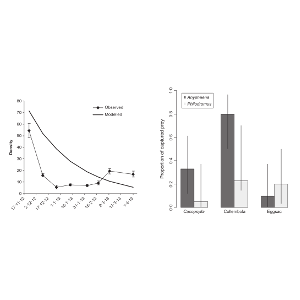 | Pekár, S; Michalko, R; Loverre, P; Líznarová, E; Černecká, Ľ Biological control in winter: novel evidence for the importance of generalist predators. Journal Article Journal of Applied Ecology, 52 (1), pp. 270-279, 2015, ISBN: 978-80-224-1618-4. @article{S.2015, title = {Biological control in winter: novel evidence for the importance of generalist predators.}, author = {S. Pekár and R. Michalko and P. Loverre and E. Líznarová and Ľ. Černecká}, url = {http://onlinelibrary.wiley.com/doi/10.1111/1365-2664.12363/pdf}, isbn = {978-80-224-1618-4}, year = {2015}, date = {2015-01-01}, journal = {Journal of Applied Ecology}, volume = {52}, number = {1}, pages = {270-279}, abstract = { The monograph is focused on Slovak spider names recorded in our country, on the history of Slovak names and basic rules of zoological nomenclature. Moreover it briefly discussed spider ecology and phylogeny, and is also a guide to Slovakian spider families. In the history of the Slovak language was largely suppressed, therefore the formation of the Slovak spider nomenclature was more or less confined to a few common and remarkable species (e. g. Araneus diadematus, Tegenaria domestica). First Slovak spider names appeared in the second half of the 19th century in natural history schoolbooks. Improvements of the Slovak nomenclature continued in 20th century by translators S. Klima, R. Klačko, A. Gutteková, I. Zmoray and others. The first important milestone in Slovak spider nomeclature was made by O. Žitnanská in the encyclopedia “Z našej prírody” (1981) presented 29 species. Next significant changes of Slovak nomenclature formed mostly in the last decade. One of the meaningful, although unpublished work, is the bachelor thesis by Korenko (2004), which listed Slovak names for 62 species and 20 spider families. However most of the names seems to be influenced by Czech nomenclature by Kůrka, Kovařík(2003). He publicized all his names and thesis on his website, which included family determination key. Thanks to this page Slovak spider names of species and their families has been available to the general public. Few years later came out the monograph about High Tatras, which listed Slovak names to 65 species (Svatoň, 2010). No other publication influenced Slovak spider nomenclature from that time. In conclusion, we found out 153species with Slovak names, represented approximately 16% of our arachnofauna. From all known Slovakian families only six lacked Slovak name. Interestingly, numerous variations of Slovak names were used dominantly for well-knownspecies e. g. Araneus diadematus, Argiope bruennichi, Teganaria domestica,Argyroneta aquatica, Dolomedes fimbriatus and Salticus sceniscus. Here we presented971 Slovak species names and 39 Slovak family names of our spiders. Additionaly to Slovak names we made an overview of scientific synonyms used in Slovak publications and known dubious names. Moreover the book offers to readers essential information and many interesting facts about spider families known from Slovakia. }, keywords = {}, pubstate = {published}, tppubtype = {article} } The monograph is focused on Slovak spider names recorded in our country, on the history of Slovak names and basic rules of zoological nomenclature. Moreover it briefly discussed spider ecology and phylogeny, and is also a guide to Slovakian spider families. In the history of the Slovak language was largely suppressed, therefore the formation of the Slovak spider nomenclature was more or less confined to a few common and remarkable species (e. g. Araneus diadematus, Tegenaria domestica). First Slovak spider names appeared in the second half of the 19th century in natural history schoolbooks. Improvements of the Slovak nomenclature continued in 20th century by translators S. Klima, R. Klačko, A. Gutteková, I. Zmoray and others. The first important milestone in Slovak spider nomeclature was made by O. Žitnanská in the encyclopedia “Z našej prírody” (1981) presented 29 species. Next significant changes of Slovak nomenclature formed mostly in the last decade. One of the meaningful, although unpublished work, is the bachelor thesis by Korenko (2004), which listed Slovak names for 62 species and 20 spider families. However most of the names seems to be influenced by Czech nomenclature by Kůrka, Kovařík(2003). He publicized all his names and thesis on his website, which included family determination key. Thanks to this page Slovak spider names of species and their families has been available to the general public. Few years later came out the monograph about High Tatras, which listed Slovak names to 65 species (Svatoň, 2010). No other publication influenced Slovak spider nomenclature from that time. In conclusion, we found out 153species with Slovak names, represented approximately 16% of our arachnofauna. From all known Slovakian families only six lacked Slovak name. Interestingly, numerous variations of Slovak names were used dominantly for well-knownspecies e. g. Araneus diadematus, Argiope bruennichi, Teganaria domestica,Argyroneta aquatica, Dolomedes fimbriatus and Salticus sceniscus. Here we presented971 Slovak species names and 39 Slovak family names of our spiders. Additionaly to Slovak names we made an overview of scientific synonyms used in Slovak publications and known dubious names. Moreover the book offers to readers essential information and many interesting facts about spider families known from Slovakia. |

